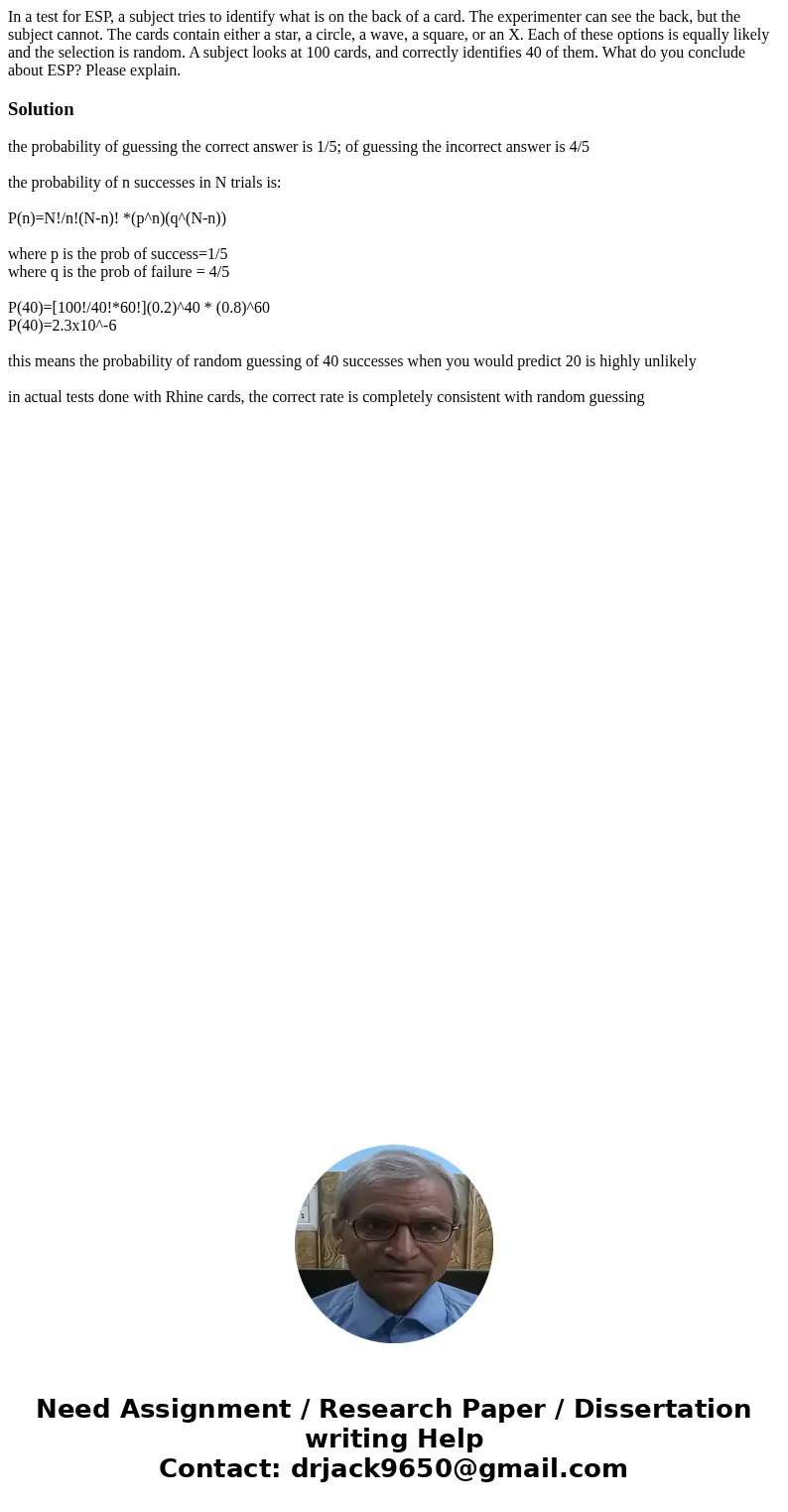In a test for ESP a subject tries to identify what is on the
In a test for ESP, a subject tries to identify what is on the back of a card. The experimenter can see the back, but the subject cannot. The cards contain either a star, a circle, a wave, a square, or an X. Each of these options is equally likely and the selection is random. A subject looks at 100 cards, and correctly identifies 40 of them. What do you conclude about ESP? Please explain.
Solution
the probability of guessing the correct answer is 1/5; of guessing the incorrect answer is 4/5
the probability of n successes in N trials is:
P(n)=N!/n!(N-n)! *(p^n)(q^(N-n))
where p is the prob of success=1/5
where q is the prob of failure = 4/5
P(40)=[100!/40!*60!](0.2)^40 * (0.8)^60
P(40)=2.3x10^-6
this means the probability of random guessing of 40 successes when you would predict 20 is highly unlikely
in actual tests done with Rhine cards, the correct rate is completely consistent with random guessing

 Homework Sourse
Homework Sourse